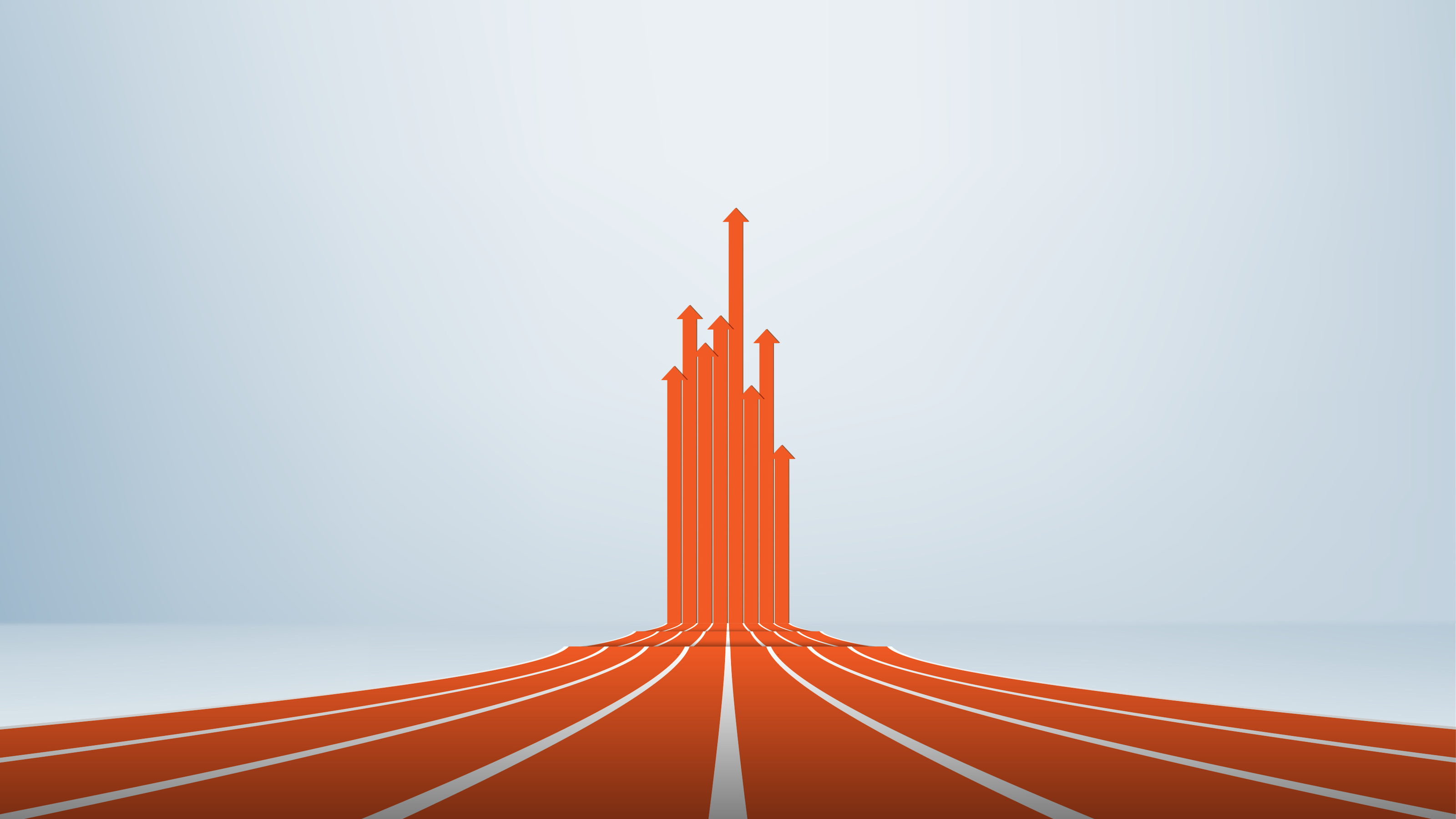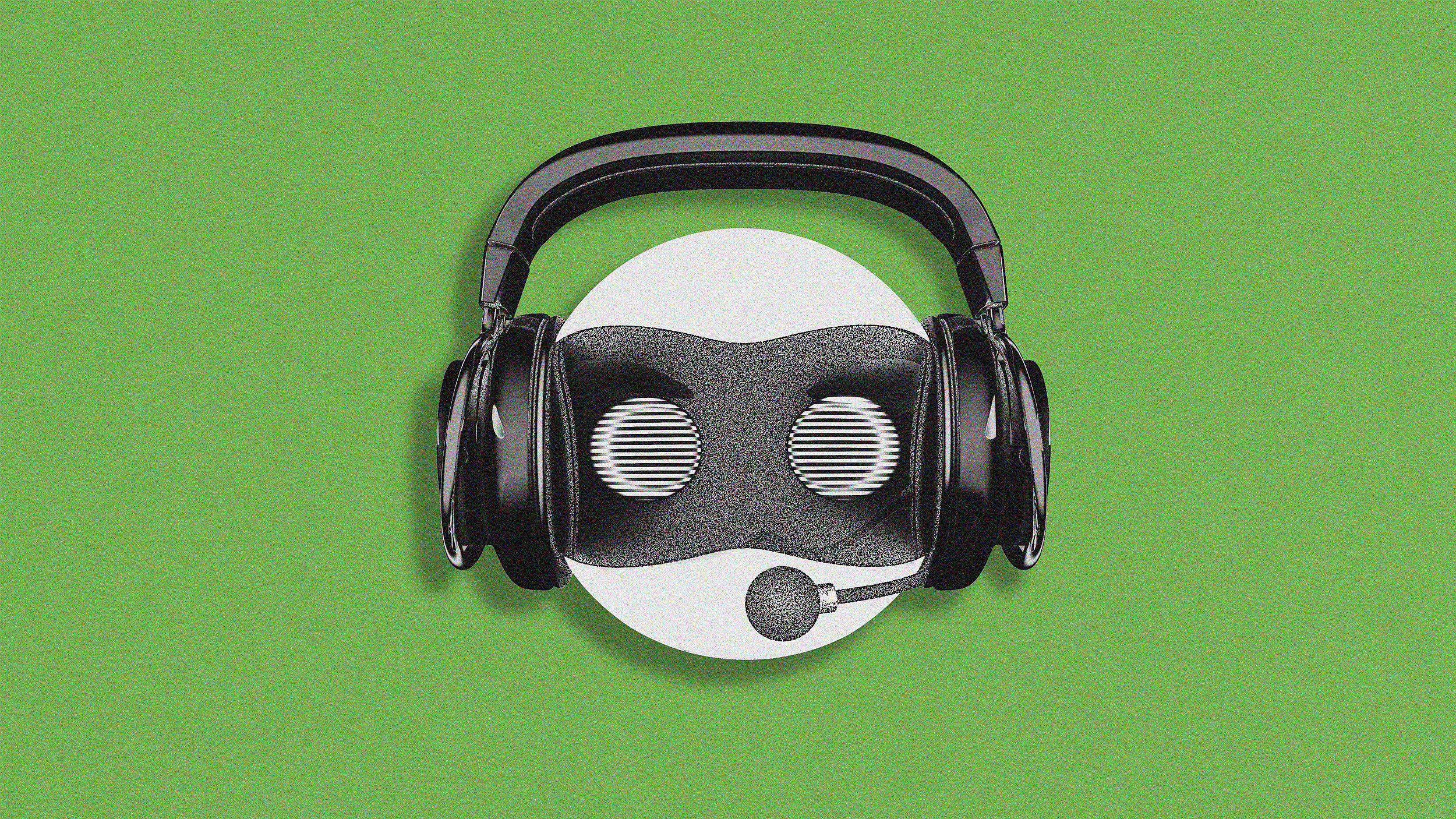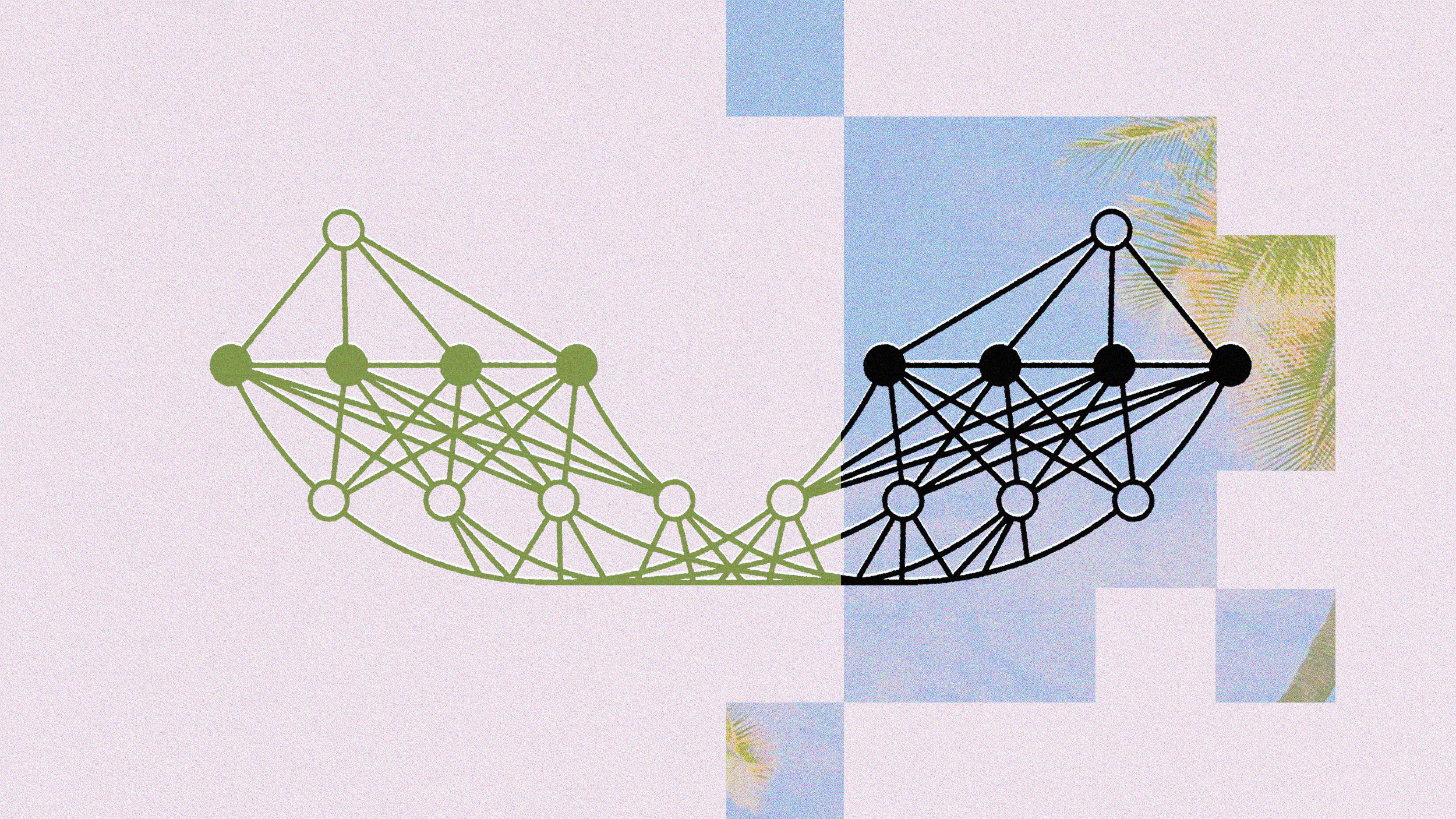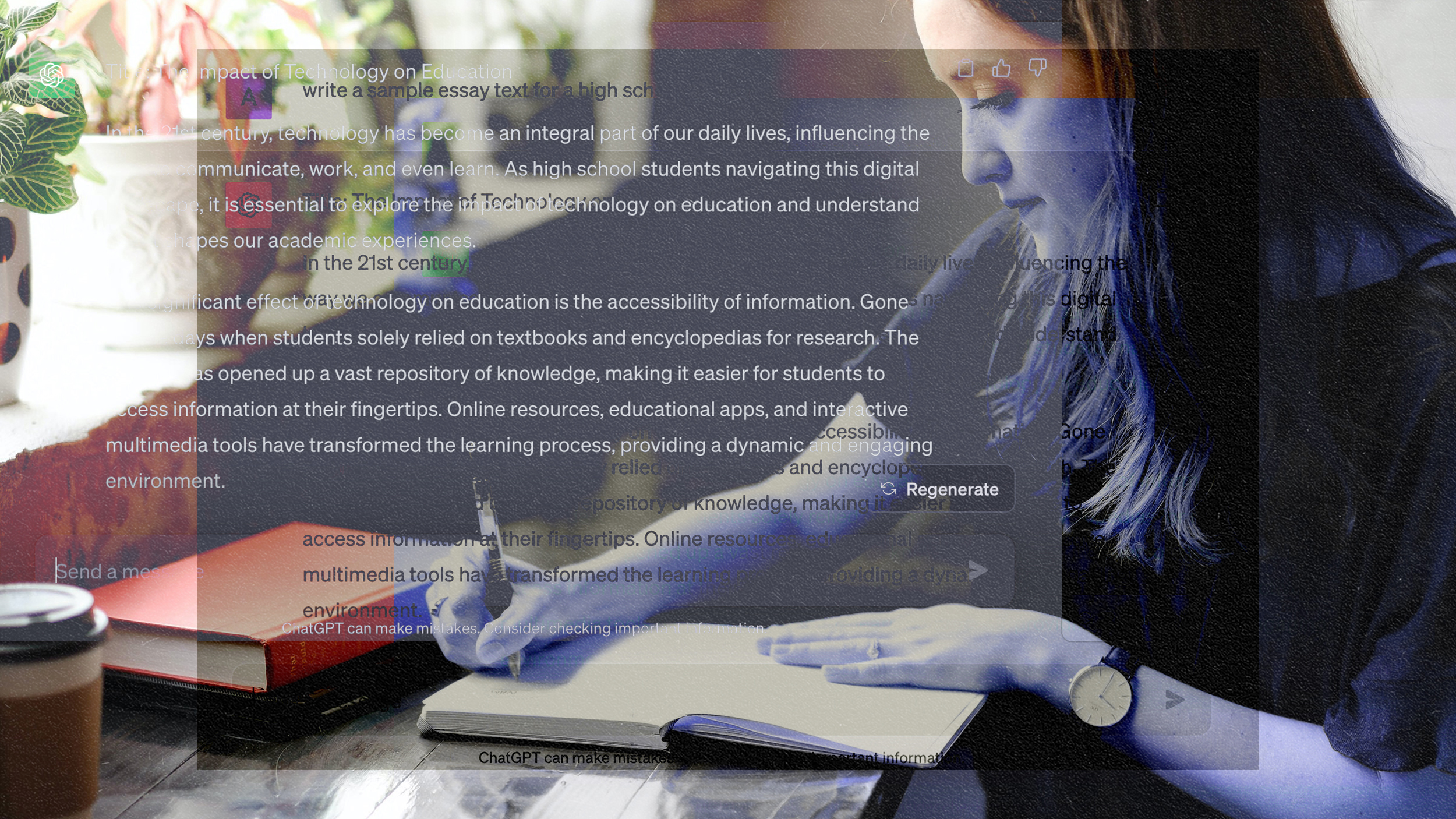The new “hybrid work” is “AI + humans”

If the emergence of generative AI has prompted a lot of excitement and anxiety about the future of work, that’s because it’s arrived a moment when we’re already asking huge questions about our working lives.
Tools like ChatGPT, DALL-E, and Bing Chat have appeared on the heels of a three-year period in which white-collar professionals have experienced a massive dislocation in where and how they work. The overnight shift to remote work that took place during COVID-19 lockdown has matured into a durable change in the structure of work: Among the 40% of American workers who have jobs that can be done remotely, a third now work from home full-time, while another 40% work remotely some or most of the time.
That means 30% of the American workforce now spends a significant portion of their working lives outside of a conventional workplace—and 70% of American employers now have a hybrid workforce, where some (if not all) employees spend some (if not all) of their days working remotely. When you consider that less than 3% of the U.S. workforce was full-time remote before the pandemic, this represents a staggeringly large and rapid transition in the social structure of work.
This transformation in the where of our working lives is about to collide with a transition in who is doing that work. This collision is the new hybrid work, in which organizations are made up of a mix of on-site and remote workers, and teams are made up of a mix of human and artificial colleagues.
The next decade of working life will be shaped by the twin challenges posed by these two simultaneous transitions. It’s absurd to talk about the automation of work or the impact of artificial intelligence on employment without reckoning with the way our assumptions about work and employment have already been transformed, recently and massively, by the embrace of remote work—as well as the backlash against it. And it’s equally pointless to talk about how to get workers to return the the office, or how to build culture and collaboration among distributed teams, without considering how AI is already reshaping our daily working lives and employees’ fears for the future.
et’s start by looking at four ways remote work has set the stage for AI acceptance.
Remote work lessened our attachment to human colleagues
While ChatGPT and other generative AI tools may be driving headlines, a recent Pew survey found that only 14% of Americans have tried ChatGPT to date. But when that same survey zoomed in on people who’ve actually tried the platform, it found that 38% of users under 50 found ChatGPT “extremely” or “very” useful, and another 39% found it at least “somewhat” useful. That’s an awfully positive response to a technology that we’ve been raised to fear as prospective robot overlords.
Remote work laid the groundwork for this acceptance. Not so long ago, human workers talked about the value of work as a place for social connection, and indeed, one of the most frequent complaints about remote work is “a sense of isolation that often accompanies the social detachment and reduced interaction with coworkers”, as Stephens and Shana put it in Perceptions and Expectations: Why People Choose a Telecommuting Work Style.
But remote employees seem to have made peace with a working life that offers fewer social gratifications: 94% of employees in remote-capable jobs want to keep working remote at least part of the time, according to a 2022 Gallup survey. We might miss the human contact with colleagues, but we don’t miss it enough to actually put on pants and go to the office every day.
And once you’ve relinquished your hold on the interpersonal delights of working life, and do more and more of your collaborative work over text, email and document sharing, how much do you really care if your invisible colleagues have human bodies? By diminishing the social function of work, the shift to hybrid and remote work has readied us for working with virtual AIs, rather than physical humans.
A forced rethinking of what (or who) is needed to “brainstorm”
Over the past three years, so many people have grown weary of online meetings that the term “Zoom fatigue” has entered the lexicon, reflecting the way that “constant eye contact with numerous individuals at once compounded by the awareness of one’s own facial expressions can be exhausting in itself.”
If we continue to rely on human-to-human interaction as the magic soil from which innovation springs—which is certainly the way business researchers have long described the nature of workplace creativity—the remote environment may feel limiting. “An individual’s development of a creative frame of reference does not take place in social isolation,” Drazin et al. write in Multilevel Theorizing about Creativity in Organizations, but rather “it is shaped by interactions with others who are engaged directly or indirectly in similar endeavors.”
Once you’ve got a workforce that is both burned-out on virtual meetings and leery of returning to the office for in-person brainstorms, it’s time to find another wellspring of innovation. AI offers us door #3: An always-on, nearly infinitely knowledgeable colleague who is happy to brainstorm or spitball on the subjects of your choice. So maybe it’s a little prone to spouting false info, but really, is that any different from the reliability of human colleagues?
For employees who miss the spontaneity, knowledge-sharing and freewheeling riffs of the old-world office—but not the hassle of a commute, or a calendar packed with meetings—AI provides a welcome alternative. To see how that can work for your own brainstorming needs, try a prompt that reflects what you might ask of a colleague who’d volunteered to be a sounding board for your own next project, like this example of brainstorming a potential course offering.
Remote workers seek a cure for digital overload
Long before the shift to remote work, digital-era workers complained about digital overload. Writing in The Academy of Management Journal in 2016, Colbert et al. noted a finding that “employees who spend more time processing email perceived higher levels of overload at work,” as well as research showing that “time required to respond to email outside of work was associated with higher levels of anger, which in turn led to increased work-family conflict”.
Pandemic-era remote work took digital overload to a whole new level. In Lockdowns and Telework, Chênevert et al. explicitly recognize “the intensity of telework during the pandemic (e.g., increase in emails and online meetings)”, but nonetheless suggest that, “To maintain a high level of engagement in telework (particularly during a lockdown), managers should communicate more often with their employees. By using online communication channels, like Slack, Teams, or Workplace, they can keep remote workers engaged and close to the organization.”
The urge to make up for reduced in-person contact with even more online contact has left today’s workers even more besieged by incoming email, messaging and other electronic communications. Into this maelstrom rides AI, with tools that promise to triage our inbox or take on the hard work of composing replies. Hybrid work has intensified an enormous pain point that AI offers to cure—and in offering us some tools for managing overload, AI may make remote work more attractive and sustainable.
Remote work enables near-term gains from AI
As much as we might welcome an AI email bot that takes the edge off our digital overload, that’s not where we’re likely to see the biggest wins from AI. The real wins, as Kevin Scott imagines, will come, “when folks who are more imaginative and creative than I am are able to incorporate new AI-based cognitive tools into their work, to make things that awe and inspire, and to solve those vexing problems that face society as we race forward to an ever more complicated future.”
I would argue that those still-unimaginable gains are unlikely to appear in the five empty minutes between boardroom meetings or water cooler conversations. The traditional workplace is such a cacophony of overheard conversations, spontaneous intrusions and back-to-back meetings that it should come as no surprise that Bailey and Kurland’s 2002 A Review of Telework Research describes “avoidance of interruptions as a primary motivation for telework.” Sure, your dog might bark—but he doesn’t expect you to answer!
In a well-organized hybrid work arrangement, organizations coordinate employee schedules so that all local-team meetings take place face-to-face during days at the office, and so that geographically distributed teams keep their online meetings to specific days and hours. That’s what allows employees to tap into the real advantage of remote work time—namely, long, interruption-free windows for focused work.
These focused work periods are where we can expect the biggest gains from AI, because that’s when workers will have the chance to dive deep into complex challenges where they push past their limits by learning to work with AI support. The more I experiment with GPT, Genei, Akkio and other AI tools, the more I have levelled up my data-analysis, writing and analytic skills—in ways that have opened entirely new avenues of research and professional capacity.
How AI resets the hybrid work conversation
Remote work may have softened the ground for AI adoption, but the adoption of AI is likely to have an equal effect on the long-term shape of hybrid work. That’s because AI gets to the heart of the biggest challenge hybrid organizations now face: how to bridge the gap between on-site and remote workers.
That gap emerges from an often-overlooked fact in the conversation about hybrid work: Some 60% of American workers are in jobs that can’t be done remotely. In the early days of the pandemic, some of these employees faced furloughs or layoffs when their employers paused or shut down operations, while others faced increased health risks by working in close proximity to others through the long months before vaccination became available. Both the financial and health impacts of the on-site/remote gap were far from evenly distributed: as Kishi et al wrote in their 2021 research report, “A national emergency: How COVID-19 is fueling unrest in the US”, “the costs are especially borne by women of color, who disproportionately work in low-income jobs that cannot be transitioned to remote work.”
As employers have attempted to return their remote workforce to the office over the past two years, at least on a part-time basis, the gap in the experiences of on-site and hybrid workers has emerged as a major obstacle to organizational cohesion. If you got COVID-19 three times while working on-site in a non-remote-capable job, you’re probably not going to be super excited to hear your white-collar colleagues complaining about how they’re angry they now have to spend two days a week in the office.
The rapid growth of AI may provide a common ground for bridging this division: Unlike previous generations of automation, which (like COVID-19) mostly affected blue-collar workers, the next wave of automation is likely to be an equal opportunity job-killer. As Michael Handel writes in Growth trends for selected occupations considered at risk from automation, “Complex perceptual and cognitive tasks, like driving vehicles, composing news articles, extracting information from legal documents, and reading radiological images, as well as all kinds of manual and service tasks previously performed by humans, came to be seen as vulnerable to large-scale substitution by machines.”
As AI makes its way deeper into organizations, changing hiring patterns and reallocating work, the division between AI-replaceable and AI-irreplaceable employees will soon look just as significant as the divide between on-site workers and those with remote-work opportunities. By opening a whole new front in the battle for employee trust and cohesion, the new hybrid work will force organizations to reckon with remote work and AI as they truly are: inextricably linked determinants of our working future.
This article appeared on JSTOR Daily, where news meets its scholarly match.





